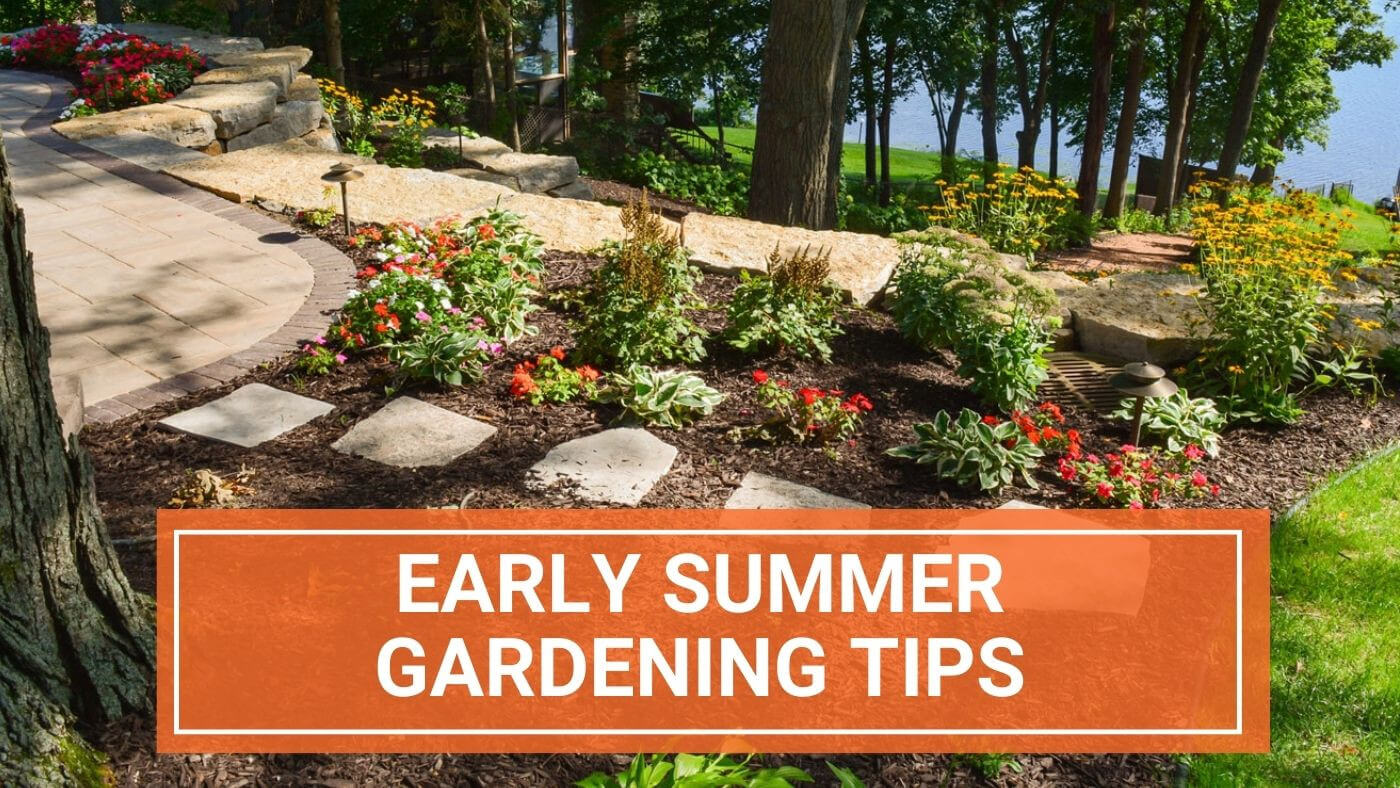
June is where summer makes her grand entrance, and gardeners everywhere are busy with what they love best…. gardening! Keep your garden thriving in June by following our tips and advice:
1. June is a great time for the addition of a good organic layer of mulch to your planting beds for weed prevention and better soil moisture retention (2-3” layer). Be very careful not to mound the mulch up around the trunks of trees, as it can kill the tree.
2. Roses should be checked for aphids and other bugs and sprayed as soon as possible. Bayer All in One Rose & Flower Care is also a great systemic for prevention, but it may take a while for the active ingredient to get into the plant.
3. Spring flowering bulbs have foliage that has now turned (or is turning) brown and drying, and this old foliage can be removed without affecting next year’s flowers. Allow the spring bulb foliage to turn brown before removing it, as the green leaves make food for next year’s bulbs.
4. Spring flowering shrubs (Forsythia, Lilacs, Mockorange) can be pruned after the flowers have finished. Some kinds of Lilacs have yet to bloom so let those Canadian Lilacs, Ivory Silk, and Japanese tree Lilacs bloom before pruning them.

5. Prune spent flowers from perennials to keep the plants neat and many will respond with new flowers to enjoy. Annuals can also be deadheaded and pinched back to encourage continued flowering. Russian sage and Autumn Joy Sedum can be sheared back by half (once they hit 12”) to encourage these plants to bloom as shorter plants, if so desired.
6. Maintaining good soil moisture is important – especially for new plantings. New plantings can take weeks to establish new roots, when watering can be less frequent. Ideally, a good slow, deep watering is required about every 7-10 days for trees and shrubs after they are established. Newly planted B&B and container plants need to be watched very carefully during that first 6 week break-in period after planting or until they have had a chance to get rooted in. The easiest method of checking to see if a plant needs water is to stick your finger in the soil it was planted with, and if it feels dry – water it, and if it feels moist – skip the water. Typically sprinkler systems do not work well for establishing new plantings unless they are putting water on the roots where needed.
7. Your lawn will benefit greatly by raising the cutting height to at least 2” or more. Bluegrass (which is what most lawns consist of) is best watered deeply, and then allowed to dry out in-between waterings. This forces the roots to go down for the water.
8. Proper maintenance of your landscape is crucial to keep it looking like it should. Ask your McKay professional if they can help you. If you are close to our Nursery here in south central Wisconsin, we have a landscape division that can help you maintain your lawn, perennials, trees, and shrubs the proper way.
To learn more from McKay Nursery blog post click here: McKay Nursery Green Tips

